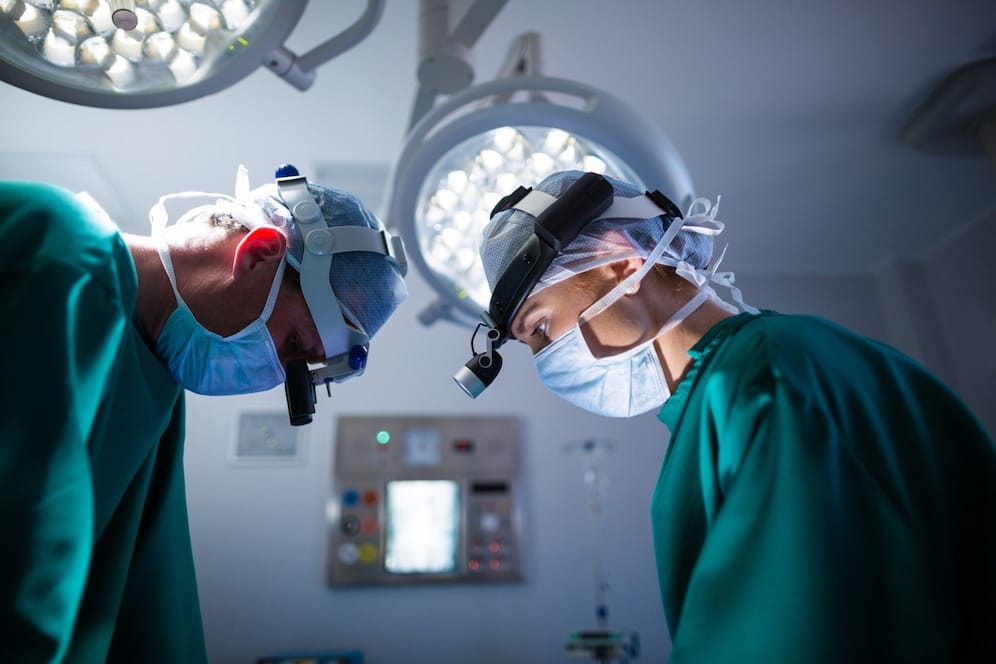Fibroids are non-cancerous growths that develop in or on the uterus, affecting over 70% of women worldwide. While some women experience no symptoms, others face challenges like heavy bleeding, pelvic pain, or fertility issues. These fibroids can significantly impact a woman’s quality of life, making it essential to explore treatment options. Laparoscopic surgery offers an innovative, minimally invasive solution to remove fibroids, providing significant advantages over traditional open surgery.

£ 3,950 starting price
Laparoscopic Surgery in the UK

£ 3,400 (All Inclusive)
Laparoscopic Surgery In Europe with KCM Clinic
In this article, we’ll explore how laparoscopic fibroid removal works, its many benefits, and understand why is this procedure the preferred choice for women seeking effective, faster recovery treatments.
What Is Laparoscopic Surgery?
Laparoscopic surgery, a type of keyhole surgery is an advanced surgical technique used to treat conditions such as uterine fibroids. This procedure involves small incisions, typically 0.5 to 1 cm, through which a laparoscope—a thin device with a camera and light—and surgical instruments are inserted to perform the operation.
During the procedure, the surgeon relies on high-definition visuals displayed on a monitor to perform precise and controlled movements, minimizing disruption to surrounding tissues. When used for fibroid removal, the technique is referred to as laparoscopic myomectomy. Unlike a hysterectomy, which removes the uterus entirely, a myomectomy specifically targets and removes fibroids while keeping the uterus intact. Women who undergo this procedure often experience a reduction in symptoms like heavy menstrual bleeding and pelvic pressure, improving their overall health and comfort.
Laparoscopy vs. Laparotomy: Understanding The Differences
Both laparoscopy and laparotomy are surgical techniques used to diagnose and treat medical conditions, but they differ significantly in approach, recovery, and potential outcomes.
| Laparoscopy | Laparotomy |
| A minimally invasive procedure that involves small incisions. | A traditional open surgical procedure involving a large incision. |
| Carried out with the assistance of a monitor that presents clear, live images from the laparoscope. | The surgeon operates directly on the internal organs, providing an expansive view of the abdominal area. |
| Faster recovery time due to minimal tissue trauma. | Longer recovery time due to the extensive incision. |
| Requires a short hospital stay. | Typically requires a longer hospital stay. |
Benefits Of Laparoscopic Surgery For Fibroid Removal
The laparoscopic operation provides numerous advantages compared to traditional open surgery (laparotomy). Key benefits include:
- Minimally Invasive
Laparoscopic procedure uses small incisions, minimizing trauma to the body in contrast to traditional surgical methods.
- Faster Recovery Time
Due to the smaller incisions and minimally invasive nature of the procedure, patients usually recover much more quickly than they would after open surgery.
- Less Pain
The smaller incisions in laparoscopic procedure result in considerably less post-operative pain and a reduced risk of complications at the wound site.
- Lower Infection Risk
Smaller incisions and the minimally invasive approach reduce the risk of infection and complications compared to open surgery.
- Reduced Scarring
The small incisions in laparoscopic surgery leave minimal scarring, providing a significant cosmetic benefit, particularly for women.
Who Should Avoid Laparoscopic Fibroid Removal?
Laparoscopic fibroid removal may not be ideal for people with large or multiple fibroids, certain health problems (like heart or lung conditions), or active infections. It’s also not recommended for pregnant women or those with severe scarring from previous surgeries. In such cases, open surgery might be a better option. Consulting with your healthcare provider will help you make an informed decision based on your specific circumstances.
Methods To Treat Fibroids (Apart From Laparoscopic Surgery)
The following treatment options for fibroids are selected based on factors such as the size and location of the fibroids, as well as the patient’s overall health and reproductive goals.
- Hysteroscopy: Removes fibroids inside the uterus using a thin, lighted tube.
- Endometrial Ablation: Destroys the uterine lining to reduce heavy bleeding from small fibroids.
- Uterine Artery Embolization (UAE): Blocks blood flow to fibroids, causing them to shrink.
- Hysterectomy: Removes the uterus, often when other treatments fail or if childbearing is not desired.
- Radiofrequency Ablation (RFA): Uses heat to shrink fibroids by inserting a needle under ultrasound guidance.
Laparoscopic Surgery For Fibroids At KCM Clinic
Laparoscopic surgery for fibroids at KCM Clinic provides a highly effective, minimally invasive option for women seeking relief from fibroid-related symptoms. This technique involves small incisions, allowing for quicker recovery, less pain, and minimal scarring compared to traditional open surgery. With the expertise of our skilled surgeons, we offer personalized care to remove fibroids while preserving the uterus and supporting patients’ long-term health and fertility goals.
The Final Word
Laparoscopic surgery for fibroid removal is a highly effective, minimally invasive option that offers quicker recovery, less pain, and fewer complications compared to traditional open surgery. However, it may not be suitable for all patients, and a thorough evaluation by a specialist is necessary to determine the best treatment approach.
For those considering laparoscopic surgery, consulting a qualified healthcare provider is essential to assess eligibility, understand the laparoscopic surgery recovery time, and evaluate the specific risks and benefits.
References:
- https://www.hopkinsmedicine.org/health/treatment-tests-and-therapies/myomectomy-hysteroscopic-laparoscopic-abdominal
- https://www.mayoclinic.org/tests-procedures/myomectomy/about/pac-20384710
- https://my.clevelandclinic.org/health/treatments/15448-myomectomy
- https://my.clevelandclinic.org/health/procedures/4819-laparoscopy
- https://medlineplus.gov/ency/presentations/100166_1.htm
- https://www.nhs.uk/conditions/laparoscopy/
- https://www.hopkinsmedicine.org/health/treatment-tests-and-therapies/laparoscopy
- https://www.mayoclinic.org/diseases-conditions/uterine-fibroids/symptoms-causes/syc-20354288
- https://www.nhs.uk/conditions/fibroids/
- https://my.clevelandclinic.org/health/diseases/9130-uterine-fibroids
- https://medlineplus.gov/ency/article/000914.htm
- https://pmc.ncbi.nlm.nih.gov/articles/PMC9676237/
- https://my.clevelandclinic.org/health/treatments/24767-laparotomy








